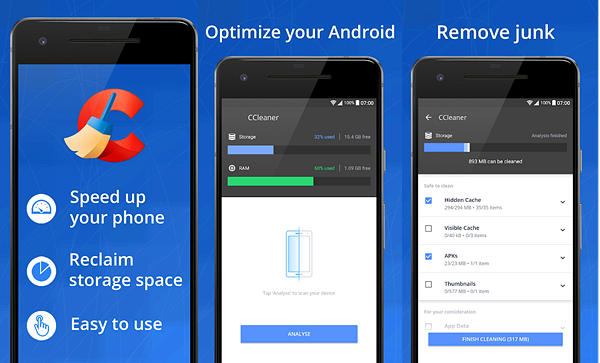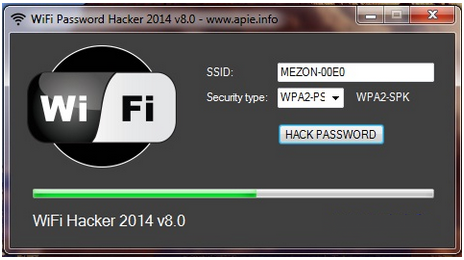- Best Mac Virus Software 2020
- Best Mac Virus Scanner Free
- Best Apple Mac Virus Software
- Best Mac Virus App Windows 10
Best Overall: Bitdefender Antivirus for Mac; Best Value: Kaspersky Internet Security for Mac; Best Free Antivirus: AVG Antivirus for Mac; Best Premium Protection: Avast Premium Security; Best Mac Exclusive: Intego Mac Premium Bundle X9; Best for Families: McAfee Total Protection; Best Identity Protection: Norton 360 w/ LifeLock.
System cleanup in one click
how to get rid of malware on macComputer viruses hold a sweet spot between boring, everyday occurrences, dating back to the 70s, and dramatic, science fiction fueled monsters that will haunt us in our new information-driven world.
One may ask, “Do you need antivirus to protect your Mac?” The reality is, all computers, even Macs, are vulnerable to malware (short for malicious software). While Apple takes a lot of security precautions, how secure your Mac is depends on your knowledge of how to check for viruses and how to remove them.
Whether you want to know how to remove virus from MacBook Pro, MacBook Air, or iMac, learning to keep your information safe first is necessary and easy, with a few tips from the professionals.
Get Setapp to protect Mac from malware
Your computer deserves to be healthy. Download Setapp, an apps toolkit that covers reliable protection methods against any kind of malware.
How to scan your Mac for a virus
Why checking your Mac for viruses is important? If a computer virus was the only thing to watch out for, this world would be a simpler place. Malware, adware, spyware, malicious files, worms, trojans, phishing software, you name it, you should check for it. The old way of thinking was that because there are more PCs than Macs in the world, the “virus people” would focus on them instead of Macs. But, we’re not in the 2000s anymore. In fact, in 2018, Apple moved to the fourth position in global laptop shipments. This means, Macs are no longer shiny white boxes that are meant for fun and entertainment.
Not only do we run our businesses off Apple devices and different versions of macOS but we also store family photographs, send out sensitive info — and, thanks to cloud computing, each device is synchronized. Unfortunately, this means your Mac could be a far juicier target than the PC sitting in some corner cubicle.
Know what a Mac virus is
Most of us are familiar with recognizing what a virus looks like thanks to its atrocious design and alarming vocabulary. However, not all viruses take the shock-and-scare approach to getting on your Mac. The latest adware could look like an Adobe Flash Player installer, but is, of course, fake. Not only does it trick you into thinking it's something as normal as Flash, but the installed adware then pretends to be a virus scanner. It shows you bogus problems and encourages you to fix them by giving over sensitive information.
Other forms of viruses could look like Microsoft Office files (e.g. Excel sheets, Word documents), Adobe Photoshop add-ons, as well as music and movie files that you get from BitTorrent or other file sharing programs. But the most common file format that a virus takes is a .dmg file, because it was created by Apple itself to help install good software on your computer. Your task in securing your Mac is to look out for .dmg files showing up when you’re trying to install something. If you’re ever trying to download something you know is supposed to be an image, music, movie, or document, but you get a .dmg file instead — that is as red as a red flag gets in terms of viruses. Do yourself a favor and delete that file immediately.
Keep Mac virus sources in mind
When it comes to having your Mac infected by a virus, we probably expect the attack to come from a stranger. Truth be told, a lot of viruses come from our friends, family, and colleagues, who unfortunately became the primary victim and are now unintentionally passing their viruses to you.
A popular malware virus of 2017 was embedded into a Word document — a Mac Word file, not a PC one. In 2018, Apple discovered flaws in their Intel processor chips that could lead to two kinds of very ambitious strains of Mac viruses too. It’s wild to think that even iPads and iPhones can contract malware.
How to check for malware
In an ideal world, scanning for viruses and the other methods for malware removal should be automatic and happen nearly continuously. In reality, you can consider yourself reasonably safe if you scan your Mac close to once a week. Fortunately, there are quite a few ways to make sure you are as protected as possible.
A good start to scan your Mac for viruses is to see whether you have applications installed that you don’t recognize:
- Go to the Applications folder via Go > Applications in Finder or using the shortcut Shift + Command + A.
- Scroll through the list and delete any unknown applications.
- Then empty the trash.
The second step you should do is check for browser hijackers and adware extensions:
- Go to Safari > Preferences. See what the Homepage URL is currently set to and correct if needed.
- Then proceed to the Extensions tab and uninstall any you don’t recognize, as they could spy on you, save your private data, and redirect you to their malicious websites.
How to run a Mac virus scanner and stop viruses from stealing your information
It’s a common misconception that viruses only happen to people who are gullible, ignorant, or technologically illiterate. The stigma is that hackers prey on people, when in reality, they prey on behavior.
Our basic assumption with Macs is that we expect Apple and our applications to have done all the security work for us. In truth, every user has to adjust their own behavior when using their Mac.
Do you use public WiFi? Consider getting a Virtual Private Network (VPN) to encrypt the connection between your laptop and the external network. Shimo is a great VPN manager app that will help you here. While using it, raw information (whether sensitive or not) can’t be fed to any malicious programs lurking on your Mac, and hackers on the same network won’t be able to decode anything you’re working on.
Best Mac Virus Software 2020
Speaking of encryption, Macs using OS X Lion or later come with the option to encrypt their hard drives using FileVault 2. Although encryption won’t prevent viruses from entering your computer (for that, you’ll need a scanner), it would still be very helpful in stopping viruses from stealing your information. To turn on FileVault:
- Go to System Preferences
- Select Security & Privacy
- Navigate to the FileVault tab
- Choose Turn On FileVault
Keep your Mac secure and virus-free
Trademark signs of something being wrong with your Mac: slow processing memory, a bloated disk space, intense CPU usage, and network speed lag. Unfortunately, viruses don’t live in an easy-to-find location like your computer’s desktop. They can be embedded within an application, most notably, your favorite web browser, where it’s easier for them to view what you’re viewing and track what you’re typing. If you kept on seeing weird websites taking over your search bar, it's a sign that your browser has been hijacked. Other applications can get corrupted or infected too, especially if they have particularly weak security systems. Another example could be an email app you use or an open-source application that is behind on their patch upgrades. Check out how to get rid of malware on mac.
If you think one of your applications is infected, a typical knee-jerk reaction would be to delete the whole thing and redownload it. Often, this will do the trick, but there are simpler solutions available. Clearing the application's cache should always be your first step, and, if there are optional hidden files, consider removing them as well.
Scan your Mac for viruses with CMM X
Run an instant malware scan to identify and remove suspicious files from your Mac. There’s no tool that can do it better than CleanMyMac X.
To remove any application’s cache and get rid of Mac malware from the Library folder:
- Use the shortcut Shift + Command + G to Go to Folder
- Type ~/Library/Caches and choose Go
- Delete any particular files inside the folder
If you are unsure about deleting cache files manually, use an app like CleanMyMac X:
- Launch CleanMyMac
- Go to System Junk and click Scan
- When the scan is complete, choose Review Details
- Select User Cache Files and pick the caches you’d like to delete
- Click Clean
In addition, CleanMyMac now features a Malware Removal function, using which should become your weekly habit.
- In CleanMyMac, choose the Malware Removal tab
- Click Scan
- Follow the instructions given. Hopefully it should say your Mac is clean most of the time.
Unfortunately, not all viruses are easy-to-understand files that just sit on your computer. Sometimes they are root certificates that intercept your passwords and messages, and send a copy to hackers. To effectively secure yourself from this, only download apps with valid developer certificates. Which ones are those? It’s hard to know but Apple built a feature that could help you here.
- Go to System Preferences
- Select Security & Privacy
- In the Allow apps downloaded from: select App Store and identified developers
You are well on your way to being protected from malware now. But, the truth is, simply avoiding viruses is not enough. You need to be proactive — it’s time to get a virus scanner.
Check viruses like a pro
If you want complete Mac security, there is no better tool than CleanMyMac X, which can effortlessly scan for all the latest viruses, malware, spyware, and more. Just launch the app on the regular basis and click the Smart Scan option to inspect your Mac for any suspicious activity, besides other suggested features for optimization and cleaning out old files.
Remove viruses from Mac completely
Using a tool like CleanMyMac makes getting rid of viruses, of all shapes and formats, very easy. After the scan, it tells you what it’s found and gives you the option to remove it completely right then and there. Additionally, it will give you all kinds of other great options on how to optimize your Mac’s performance.
As mentioned above, hackers who want to steal your information don’t target you specifically, they target your behavior. So, with this in mind, change your behavior when it comes to using your Mac in potentially unsafe ways. Recognize that viruses come and go, all the time, and across many different file formats. If you get a virus, you’re not ruined.
Arm your computer with encryption tools (like FileVault and a VPN), so that your information can’t be stolen. Practice a healthy dose of skepticism when downloading files. But, most importantly, get professional apps that bring you the most results, like CleanMyMac or Shimo — all of which are available on Setapp for your to try free. So get a scan now and see what it says.
Meantime, prepare for all the awesome things you can do with Setapp.
Read onSign Up
Many of us think that Mac’s don’t need antivirus solutions, it is not true. Any computer is hackable and not exempt from malware, viruses, and Trojans. Even Macs security advice states that “No system can be 100 per cent immune from every threat”.
Day by day online threats are on the rise; it is better to have an antivirus for Mac. Here is the list of 12 best antivirus apps for Mac. In this article, we have handpicked 12 best Antivirus apps for Mac.

1. iAntivirus
iAntivirus is a free antivirus solution for Mac. It offers Blocking threats before they can damage your Mac, iPhoto pictures, iTunes media, and other files. Stops spyware that can be used to eavesdrop on you, steal your personal information, and take control of your Mac. And provides regular updates for detecting and eliminating late-breaking threats. We recommend iAntivirus for every Mac user.
2. CalmXav (for Mac)
ClamXav is a free virus scanner for Mac OS X. It uses the very popular ClamAV open source antivirus engine as a back end and can detect both Windows and Mac threats. It offers free virus definitions daily, Send selected files to quarantine or trash with one click, Scan only the files you tell it to, or your entire hard drive, whichever you prefer and clearly, lists infected files. It is one of the most popular free Antivirus app available for Mac.
3. Avast (for Mac)
Avast offers free antivirus for Mac. It can scan all your email traffic for viruses and other malware, including any sent as attachments from Windows users, to ensure your Mac stays clean. Any files you open/execute scanned in real-time, to stop the infection before it spreads. And you have the option of determining which files and directories you do and don’t want to be scanned.
4. F-Secure Antivirus for Mac
F-Secure Antivirus is available for free as well as paid. The paid version brings advanced features. The free version is enough for many users. It provides firewall as well as antivirus and malware protection. The main functions of this antivirus software are not different than the others. The settings tab is simple and easy to use.
5. Intego Mac Internet Security X9

Intego Mac Internet Security X9 is a paid antivirus software. The basic software price starts from $39.99. In the basic software, the users get antivirus protection and firewall protection. Intego included two of their Mac tools VirusBarrier X9 and NetBarrier X9 as a bundle to make Intego Mac Internet Security X9.
The premium version includes three more tools – ContentBarrier X9, Mac Washing Machine X9 and Personal backup 10.9. The cons are the missing of browser protection.
6. Bitdefender Antivirus for Mac
Bitdefender Antivirus for Mac is also a paid software. When it comes to antivirus and malware protection, Bitdefender has earned a reputation in the industry. In most of the test, Bitdefender proved to be one of the topmost antivirus software. It uses low resources on the system. The prices starting from $39.99 for a single Mac system for 1 year and go up to $129.99 for three Mac systems for three years.
7. Sophos Anti-Virus for Mac
Sophos Anti-Virus for Mac is available for free. The features of Sophos are antivirus protection and web protection. But it lacks a firewall tool. According to many analysts, Mac already has a firewall feature that comes along with OS X. As the Sophos is available for free, it is not a major con. The antivirus and web protection provided by Sophos are strong and secure without any compromise.
8. McAfee Total Protection (Including Mac)
Best Mac Virus Scanner Free
McAfee Total Protection is a paid software with a lot of features set. The first year annual subscription costs are $44.99. From the second year, it climbed up to $89.99.
For the first year, the price seems good but from the second year, it is higher than the other antivirus competitors. At the same time, McAfee provides an interesting set of features. The features include antivirus and malware protection, anti-spam control, permanent deletion of sensitive files, identity protection and online transaction protection, True Key password app, parental control and encryption software.
With a single license, you can use McAfee Total Protection in all the supporting devices. Currently, it supports Android, Windows, Mac and iOS.
9. ESET Cyber Security for Mac
ESET Cyber Security is available as paid software. The pricing starts from $39.99 for the basic pack. If you want the parental control and firewall, then you need to go for the pro pack which costs you $59.99. In terms of security performance, ESET is a good one. It covers every aspect of Mac security. It also includes social media privacy scan.
10. Kaspersky Internet Security for Mac

Best Apple Mac Virus Software
Kaspersky Internet Security for Mac is a paid Mac security software. Kaspersky is a big name in the cybersecurity industry. It also reflected in the pricing. This security software costs $59.99 per year per Mac. It covers the same security features as the above software. Kaspersky has a total security pack which covers all the devices and provides kids safety, files encryption, and password manager.
11. Panda Antivirus for Mac
Panda Antivirus for Mac is a paid antivirus solution. It protects the Mac against both Mac and Windows malware. It can also scan any iOS device attached to the Mac. Considered as one of the top antiviruses for Mac in finding the malware and infections. It costs $49.95.
12. AVG for Mac
AVG for Mac is available in both free and paid pro version. As usual, the free version is limited in functions while the pro version provides more useful features. In all the independent tests, AVG proved as one of the best. But it affects system performance while providing the best protection.
Conclusion
Best Mac Virus App Windows 10
These are the best Antivirus apps for your Mac. These apps can secure your Mac from phishing, spamming, virus and malwares. Let us know which Antivirus app you are using for your Mac and how it is performing.